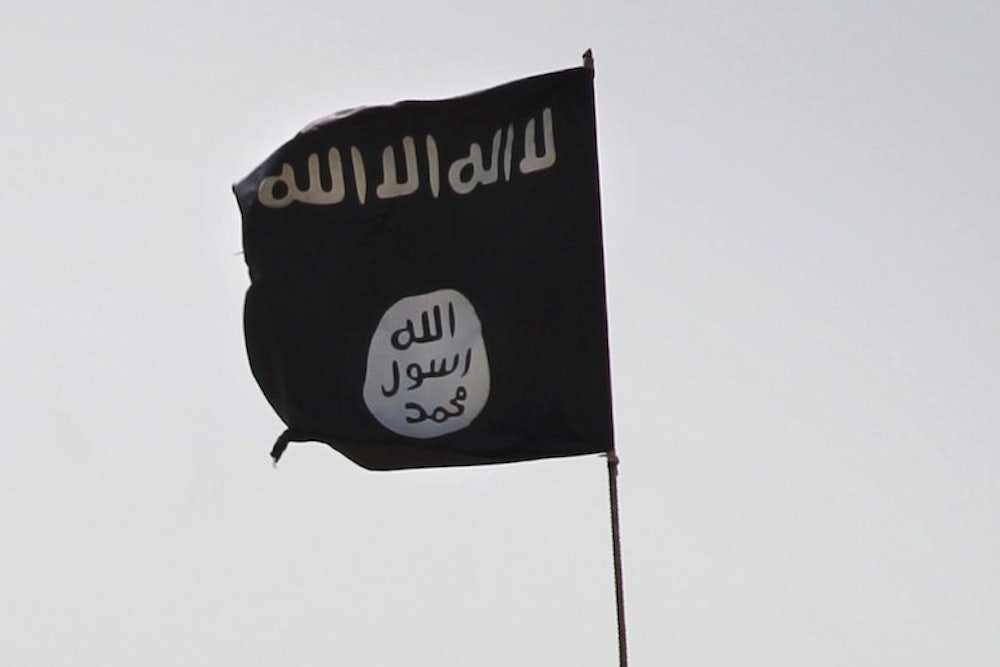On August 28, in the wake of the Islamic State’s beheading of American journalist James Foley, President Barack Obama admitted that he didn’t “have a strategy yet” for defeating the group. Republicans and some Democrats were quick to pounce. Rep. Paul Ryan demanded a strategy to “fundamentally finish them off.” Since then, with the beheading of another American journalist, and criticism of the president mounting, Obama unveiled on Wednesday evening a four-part strategy to “degrade and ultimately destroy ISIL.” By doing this, he seemed to answer his critics, but did he also present an effective strategy for finishing off IS? I have my doubts.
An effective strategy depends on an objective that can be achieved with the resources and allies at hand. It's questionable whether Obama has the means to destroy IS. The US failed to destroy the Taliban in Afghanistan, and even failed to destroy al Qaeda, which continues to have a global presence. IS, which is establishing a political base among Sunnis in Iraq and is the governing authority in parts of Syria, may be difficult to dislodge, let alone destroy.
Obama may have implicitly acknowledged this in his speech. As Juan Cole has remarked, Obama’s comparison of his strategy toward IS with his strategy toward al Qaeda in Yemen is very telling. American drones and cooperation with Yemen’s government have prevented al Qaeda from making significant advances, but they have not destroyed it. It is still a force in that country and must be reckoned with. IS may prove to be an Islamist flash in the pan, but it may not, and if it has any lasting power, Obama’s strategy, modeled on Yemen, may not succeed in eliminating it.
What Obama may be able to do, on the model of Yemen, is to contain and weaken IS. But in Iraq, as Obama noted, success will depend upon the ability of the new government to re-unite Shia and Sunnis. So far it has not succeeded, but it still may. Syria is a much harder case. Obama’s strategy seems to depend on arming and training the Free Syrian Army, but the FSA has not appeared to be a match for either Bashar al Assad’s regime or for IS. And anti-IS Islamist forces are either in disarray or close to al Qaeda. So it’s really not clear how even a reduced version of Obama’s strategy will succeed in Syria.
Obama, of course, was forced on purely political grounds to provide a strategy for combatting IS, but when he meets with his National Security Council, there are broader questions of Middle East strategy that he will have to address. Some of these came up obliquely in his speech. Others not at all.
In trying to answer IS’s challenge in Iraq, the United States needs Iran’s cooperation. Obama didn’t mention Iran at all in his speech but instead referred to “Arab” countries and even to the NATO countries that he claims are going to join the anti-IS coalition. Arab countries are imporant, and one NATO country, Turkey, also is. But Iran is crucial. It's the main backer of the Shiite Iraq government and of Assad. What, at this point, is the American strategy toward working with or against Iran in the region? And what can be done to ease relations between Iran and Saudi Arabia, which would be important to resolving conflicts in Iraq and Syria? How much bearing do the nuclear talks, which seem to have stalled, have on the possibility of cooperation with Iran in the region?
In Syria, the Obama administration initially believed that the anti-Assad movement, which was inspired by the Arab Spring, would enjoy the same kind of success as movements in Tunisia, Libya, and Egypt. (Never mind what happened to these movements later!) The United States therefore called for Assad’s ouster, but didn’t actively aid the rebels. Things have not turned out well for the rebels and for this strategy.
The Syrian opposition is, to all appearances, deeply divided, and some major groups within it, including IS and the al Nusra Front, are even more hostile to American interests in the region than the Assad government. Yet the United States persists in a strategy of trying to topple Assad by arming one segment of the rebels. Does this strategy make sense at all? In Obama’s speech, he said the United States could not “rely” on Assad’s regime to combat IS, but would seek “the political solution necessary to solve Syria’s crisis once and for all.” Who will be involved in this political solution? Can the involvement of the Assad government be ruled out? And can cooperation with it in defeating IS in Syria be ruled out?
Obama may have fallen into a trap in his speech. On the one hand, he may have overstated the threat that IS posed, raising the specter of its militants returning to Europe and the United States to wreak havoc. There are echoes here of some of George W. Bush's infamous warnings. At the same time, Obama may have understated IS’s own objectives within Iraq and Syria. By describing it simply as a “terrorist” group, and as having “no vision other than the slaughter of all who stand in its way,” Obama discounted IS’s pretensions of creating a permanent presence in Iraq and Syria. He hyped the threat, but discounted its basis. That could pose a political as well as a strategic problem in a year or two if, as is likely, he fails to destroy IS.
